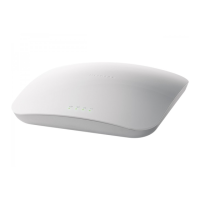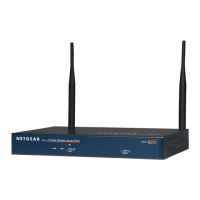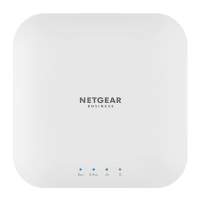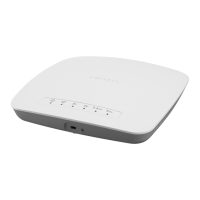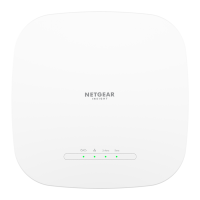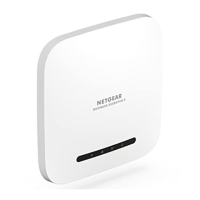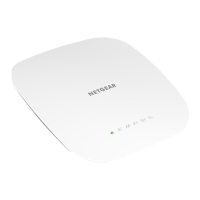Introduction
10
ProSAFE Single Band 802.11n Wireless Access Point WN203
• Access control. MAC address filtering can ensure that only trusted wireless clients can
use the wireless access point to gain access to the wireless and wired LAN.
• Security profiles. When using multiple BSSIDs, you can configure unique security
settings (encryption, SSID, and so on) for each BSSID.
• Hidden mode.
The SSID is not broadcast, assuring that only clients configured with the
correct SSID can connect.
• Telnet and SSH command-line interface. Using an application such as PuTTY
, you can
access the wireless access point over a Telnet or Secure Shell (SSH) connection and use
the command-line interface (CLI) to configure the wireless access point.
• Upgradeable firmware. Firmware is stored in flash memory.
You can upgrade it easily,
using only your web browser, and you can upgrade it remotely. You can also use the
command-line interface.
• Configuration backup. Configuration settings can be backed up to a file and restored.
• Secure and economical operation.
Adjustable power output allows more secure or
economical operation.
• PoE support
. Using Power over Ethernet (PoE), any 802.3af-compliant midspan or
end-span sources can supply power to the wireless access point over the Ethernet port.
The wireless access point can receive all required power on one Ethernet port from a
single PoE source.
• Autosensing Ethernet connection with
Auto Uplink™ interface. Connects to
10/100/1000 Mbps IEEE 802.3 Ethernet networks.
• LED indicators. Power,
Test, LAN, and WLAN LEDs are easily identified.
• VLAN security profiles. Each security profile is automatically allocated a VLAN ID when
the security profile is modified.
802.11b/g/n Standards–Based Wireless Networking
The wireless access point provides a bridge between wired Ethernet LANs and
802.11b/g/n-compatible wireless LAN networks. It provides connectivity between wired
Ethernet networks and radio-equipped wireless notebook systems, desktop systems, print
servers, RFID tags, and other devices.
In addition, the wireless access point supports the following wireless features:
• Aggregation support
• Reduced InterFrame spacing support
• 2x2 multiple input, multiple output (MIMO) support
• Distributed coordinated function (CSMA/CA, back-of
f procedure,
ACK procedure,
retransmission of unacknowledged frames)
• RTS/CTS handshake
• Beacon generation
• Packet fragmentation and reassembly
• Auto or long preamble
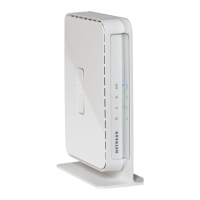
